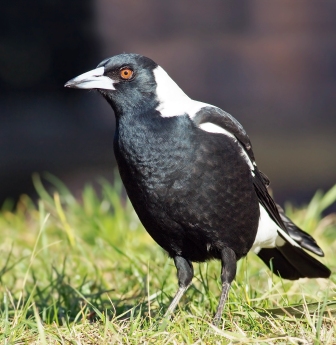Wildlife on campus
We are lucky to have an abundance of wildlife on our Charles Sturt University campuses, including a variety of bird life, ducks, echidnas, possums and more. While most are harmless, there are some that you should take precautions with or avoid. These animals are listed below.
-
Snakes chevron_right
During warm weather, snakes are on the move and people are reminded to take precautions. It is important that you don't panic when you see a snake - on most occasions, the snake is trying to get out of the way as quickly as possible. Snakes are shy creatures and quickly scurry away at the first sign of noise (vibration) or disturbance.
Usually, snakes will only strike at something as a last resort and feel under threat.
Most snake bites occur when people try to pick up or kill a snake. It is important to remember that snakes are protected and it is illegal to harm them. Heavy fines and even jail terms could be imposed.
Snakes most commonly found in Charles Sturt campus areas are brown snakes, red-bellied black snakes, tiger snakes, and copperhead snakes.
-
Kangaroos chevron_right
Kangaroos are an appealing feature of the Australian bush. As urban areas grow, more people are coming into contact with these wild, powerful and unpredictable animals.

Rural and semi-urban areas provide ideal living conditions for the Eastern Grey Kangaroo. Lawns, pastures and dams are readily available food resources that encourage visitation by kangaroos. In addition, houses, other structures and garden trees providing shade encouraging kangaroos to venture into backyards.
Be Aware
Kangaroos are often portrayed in books, films and advertising as a friendly and cuddly Australian cultural icon. However, they are wild, unpredictable animals with considerable size and power. We can admire them, but we must remember that they act on instinct and are capable of injuring people.
The risk of being attacked by a kangaroo is extremely low.
Avoiding Risks
- Avoid areas where kangaroos are present
- Avoid situations where you may be seen as a threat to a kangaroo
- Do not walk directly towards a kangaroo
- Do not stand up tall, stare or hold your arms out towards a kangaroo
- Do not go near kangaroos engaged in courtship or mating behaviour (for example, Males sniffing, touching or escorting females)
- Do not go near male kangaroos that are sparring, fighting or showing off their size and strength to each other
- Do not go near a kangaroo that is growling or clucking
- Do not move between a female and her joey
- Do not allow your dog to approach a kangaroo. Kangaroos will vigorously defend themselves against dogs, and this may draw you into a dangerous situation
If you feel threatened by a kangaroo, move well clear. Do not approach it. If you need to, carefully retreat in a crouched or crawling position away from the kangaroo to a safe location or distance away from the animal.
For injured animals contact the Wildlife Information and Rescue Service (WIRES).
Remember, kangaroos are protected animals and it is an offence to injure or kill them.
-
Magpies chevron_right
The Australian magpie is a native bird of solid medium build with distinctive black and white plumage and gold brown eyes. For most of the year magpies are fascinating and endearing native birds. However, during their breeding season from late August/ early September for around 6-8 weeks, a small percentage of birds can be aggressive, swooping at pedestrians and cyclists in defence of their nests and territory.

Magpies are a protected native species in Australia.
Don't fight back if a magpie swoops. Throwing sticks and stones at a magpie will likely make it more aggressive the next time anyone enters the territory around their nest.
If you encounter an aggressive magpie that is interfering with your University activities, contact the Division of Facilities Management's Central Point of Contact on (02) 633 86336. Signs can be issued in the area advising pedestrians and cyclists to avoid the area or proceed with caution.
If you see a snake, you should:
- Stand still
Snakes can't hear but they sense vibrations. If you stand still, they won't know you're there. - Move away - SLOWLY
The snake is only trying to get from one point to another, allow it to do so. - If the snake is in, or near, your building and you're worried about it - call Facilities Management's central point of contact (02) 6338 6336 or Campus Security on 1800 931 633.

